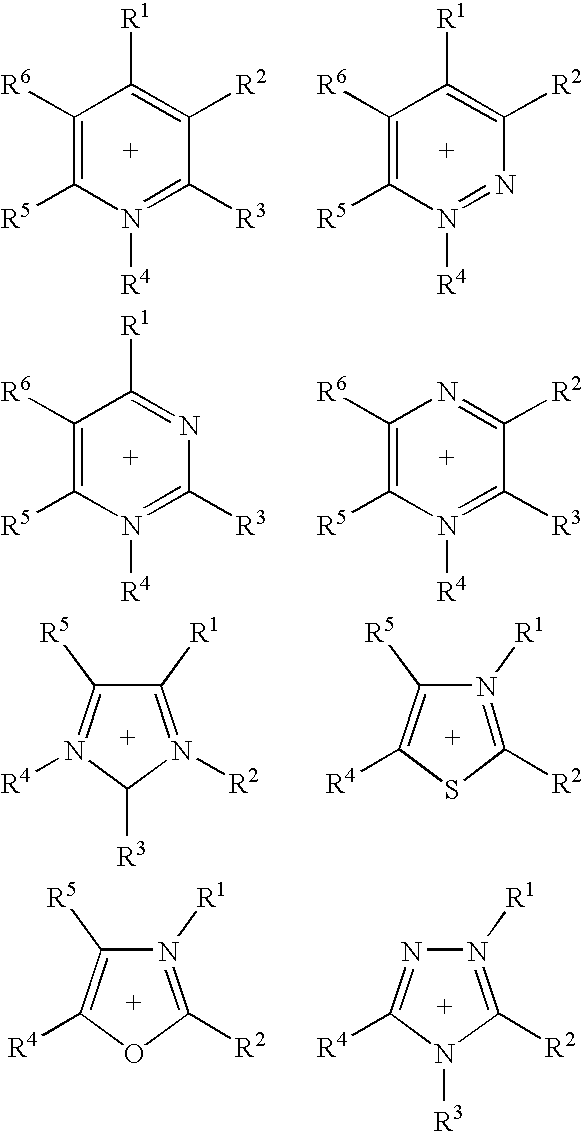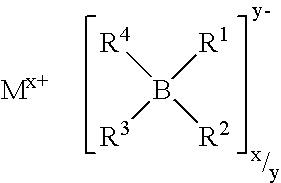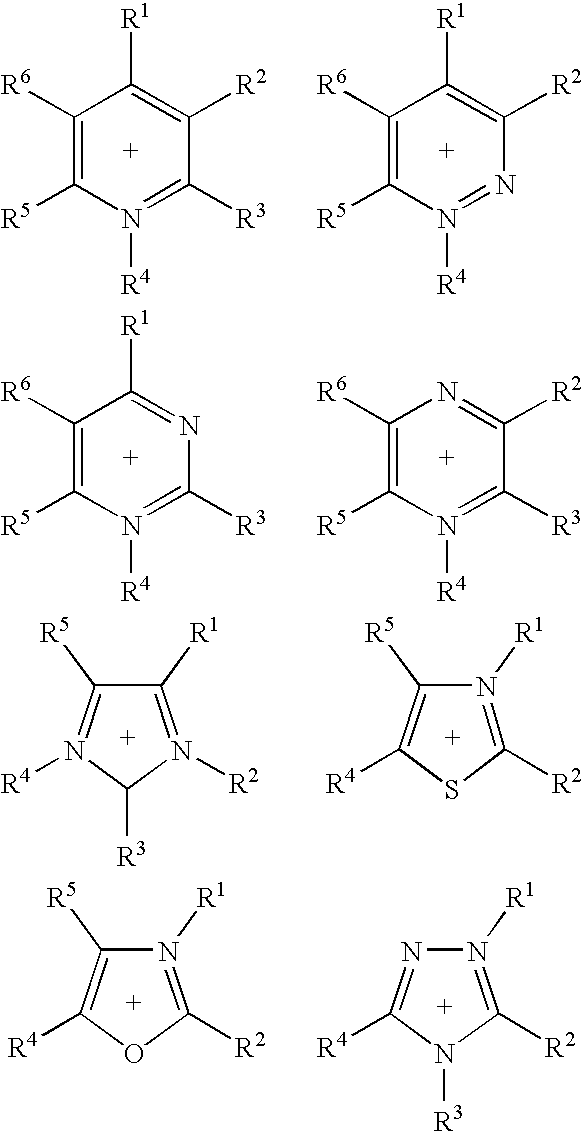Ionic liquids II
a technology of ionic liquids and ionic liquids, which is applied in the field of ionic liquids, can solve the problems of toxic gas formation on contact with atmospheric moisture, unsuitable compositions for electrochemical cells, and high cost of raw materials synthesis, and achieves low corrosivity, high thermal stability, and large liquid range
- Summary
- Abstract
- Description
- Claims
- Application Information
AI Technical Summary
Benefits of technology
Problems solved by technology
Method used
Image
Examples
example 1
Synthesis of 1-ethyl-3-methylimidazolium tris(pentafluoroethyl)trifluorophosphate
[0190]Lithium tris(pentafluoroethyl)trifluorophosphate is synthesized in accordance with DE 196 411 38. The product is reacted in acetonitrile in accordance with the following reaction equation:
[0191]
[0192]The reaction mixture is vacuum filtered through a glass frit with cooling in order to remove the LiCl formed as by-product. The solvent is distilled off under reduced pressure, and the resultant 1-ethyl-3-methylimidazolium tris(pentafluoroethyl)trifluorophosphate is dried under reduced pressure.
example 2
Synthesis of 1,2-dimethyl-3-propylimidazolium tris(pentafluoroethyl)trifluorophosphate
[0193]Lithium tris(pentafluoroethyl)trifluorophosphate is synthesized in accordance with DE 196 411 38. The product is reacted in acetonitrile in accordance with the following reaction equation:
[0194]
[0195]The reaction mixture is vacuum filtered through a glass frit with cooling in order to remove the LiCl formed as by-product. The solvent is distilled off under reduced pressure, and the resultant 1,2-dimethyl-3-propylimidazolium tris(pentafluoroethyl)trifluorophosphate is dried under reduced pressure.
example 3
Synthesis of 1-ethyl-3-methylimidazolium tris(nonafluorobutyl)trifluorophosphate
[0196]Lithium tris(nonafluorobutyl)trifluorophosphate is synthesized analogously to lithium tris(pentafluoroethyl)trifluorophosphate. The product is reacted in acetonitrile in accordance with the following reaction equation:
[0197]
[0198]The reaction mixture is vacuum filtered through a glass frit with cooling in order to remove the LiCl formed as by-product. The solvent is distilled off under reduced pressure, and the resultant 1-ethyl-3-methylimidazolium tris(nonafluorobutyl)trifluorophosphate is dried under reduced pressure.
PUM
| Property | Measurement | Unit |
|---|---|---|
| ionic | aaaaa | aaaaa |
| conductive | aaaaa | aaaaa |
| temperature | aaaaa | aaaaa |
Abstract
Description
Claims
Application Information
 Login to View More
Login to View More - R&D
- Intellectual Property
- Life Sciences
- Materials
- Tech Scout
- Unparalleled Data Quality
- Higher Quality Content
- 60% Fewer Hallucinations
Browse by: Latest US Patents, China's latest patents, Technical Efficacy Thesaurus, Application Domain, Technology Topic, Popular Technical Reports.
© 2025 PatSnap. All rights reserved.Legal|Privacy policy|Modern Slavery Act Transparency Statement|Sitemap|About US| Contact US: help@patsnap.com



